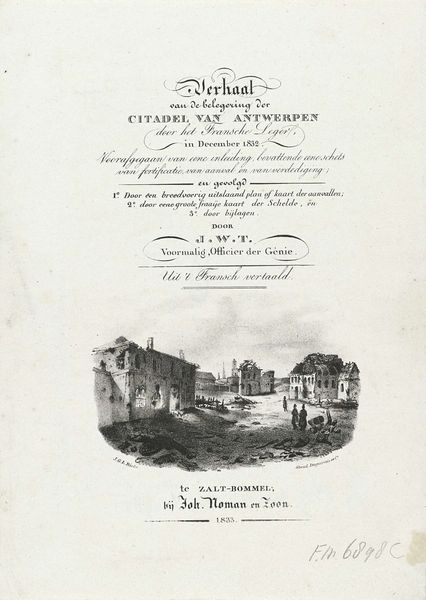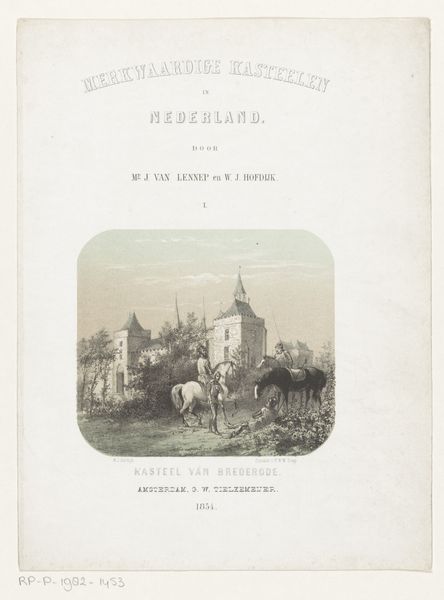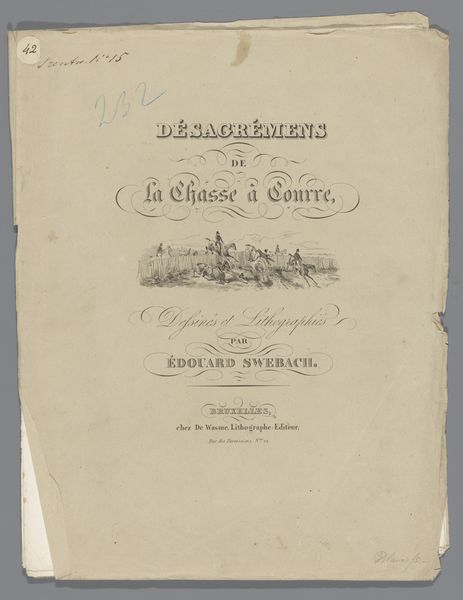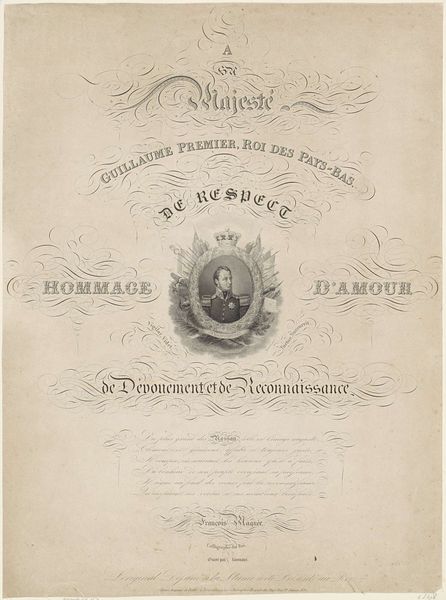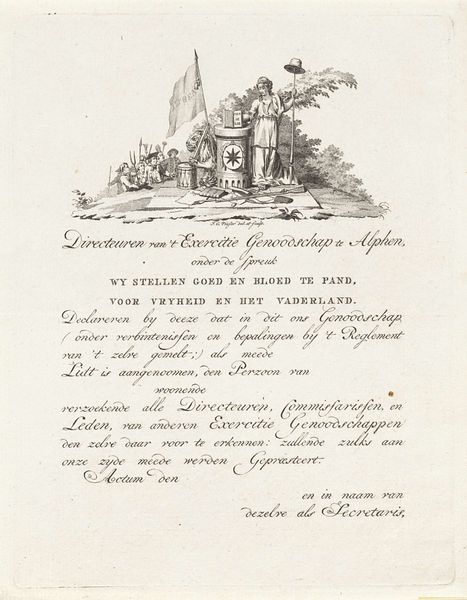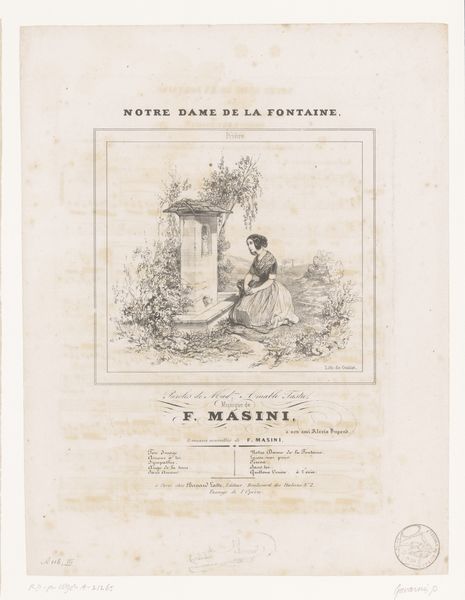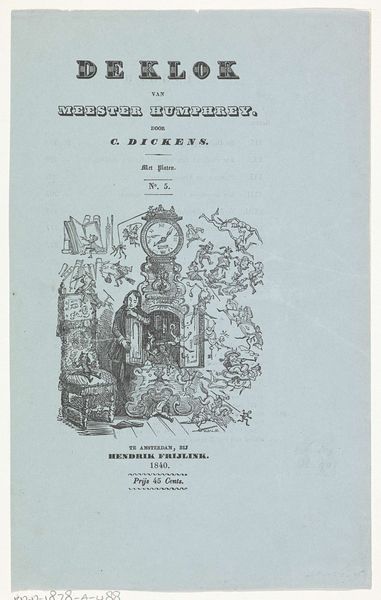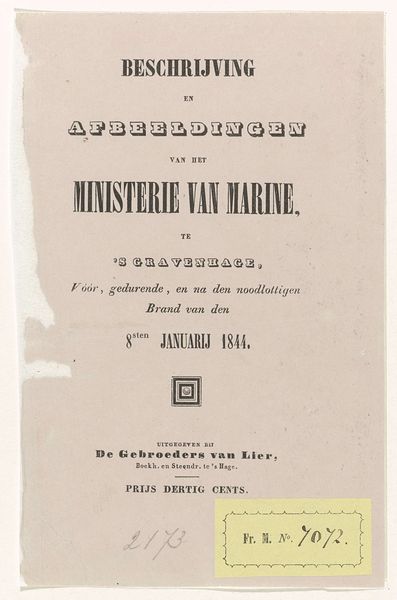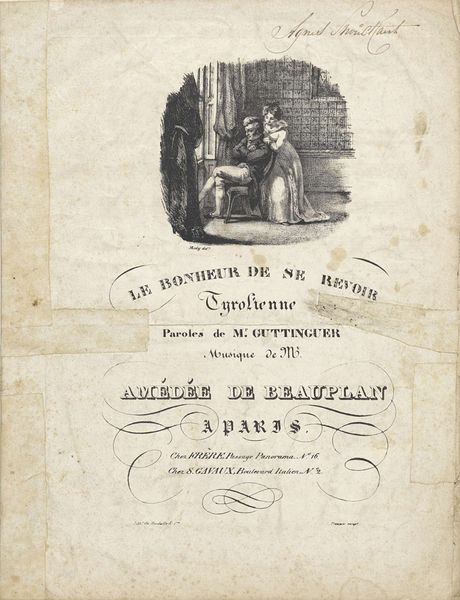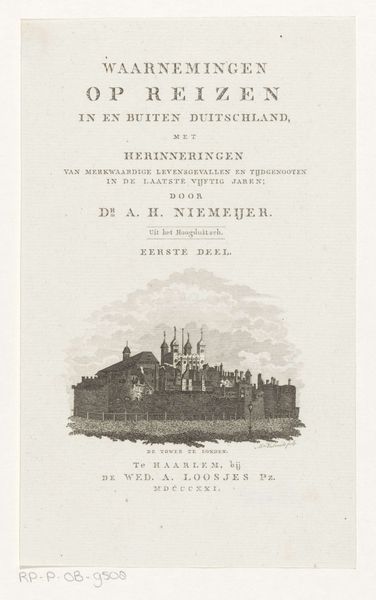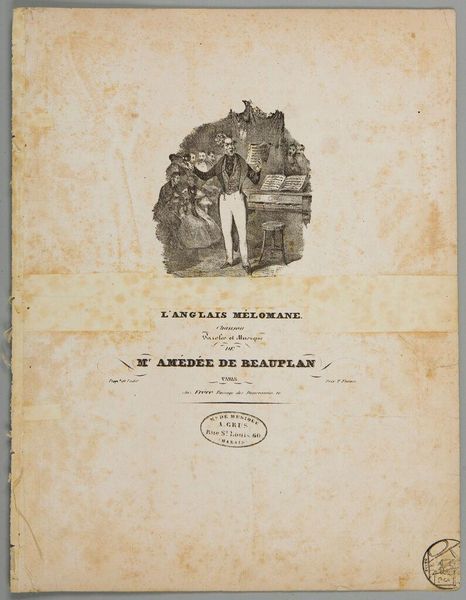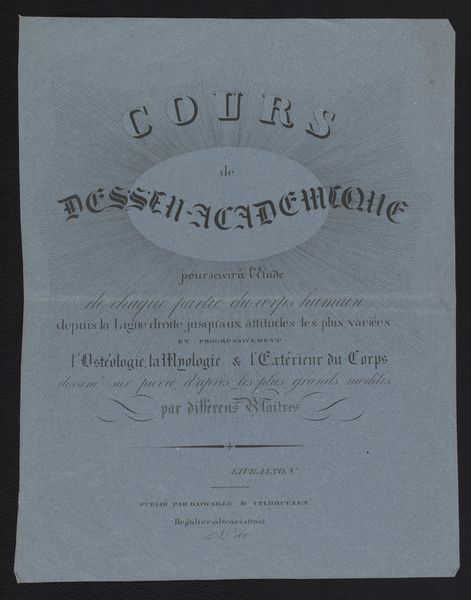
Herinnering van de Citadel van Antwerpen. 1832. Marsch voor Militaire Muzijk. Gearrangeerd voor de Piano en opgedragen aan H.H. Officieren en Oud-Officieren der Zee- en Landmagt, vereenigd tot het gedenken van de 25e verjaring dier sterkte 1857
0:00
0:00
Dimensions: height 345 mm, width 270 mm
Copyright: Rijks Museum: Open Domain
Curator: This lithograph from 1857, entitled "Herinnering van de Citadel van Antwerpen," or "Memory of the Citadel of Antwerp," commemorates the 25th anniversary of the defense of that fortress. The piece arranges music, specifically a military march, for the piano. Editor: The crumbling buildings in the cityscape immediately evoke a feeling of somber reflection, a memorialized past tinged with loss, maybe? The way the thick, stylized font nearly overwhelms the image underscores this heavy feeling, almost like a physical weight. Curator: Right, and look at the materials themselves. The aging paper is so central to understanding the piece. It serves not only as the support for the print but also signifies the passage of time. Each crease, each fade is its own material element which all carry symbolic meaning as we remember that historical siege. Editor: Yes, definitely, the choice of a lithograph as a relatively accessible medium would have allowed for wider distribution, situating this piece in a broader network of remembrance. To whom was this accessible, though? Dedicating this work to the officers speaks to a specific class of people affected. Curator: Indeed, and consider the role of music. Arranging it for piano domesticates the military march, transitioning it from a public spectacle to a private, bourgeois experience. The piano becomes a vessel for nationalist memory, commodified for home consumption. Editor: The romanticization of military events within domestic sphere is important here; consider the implications of commemorating violence as leisure. What political discourses and gendered ideologies are being further established within domestic spaces through consumption? It appears this musical score served to solidify and reinforce national identity, and also commemorate the officers who participated in its defense. Curator: I hadn't considered the gendered element to consumption of this type, it's insightful. Editor: It’s fascinating how this lithograph allows us to dissect layers of commemoration, national identity, and material culture. I see how crucial your analysis of craft becomes when challenging what can become romanticizing of violence, helping me to understand both the tangible remnants of history. Curator: I agree, recognizing the labor of creating this type of accessible nationalist tool—the hand-drawn type, the printing, even the arrangement itself—helps us avoid taking that initial impact at face value.
Comments
No comments
Be the first to comment and join the conversation on the ultimate creative platform.
